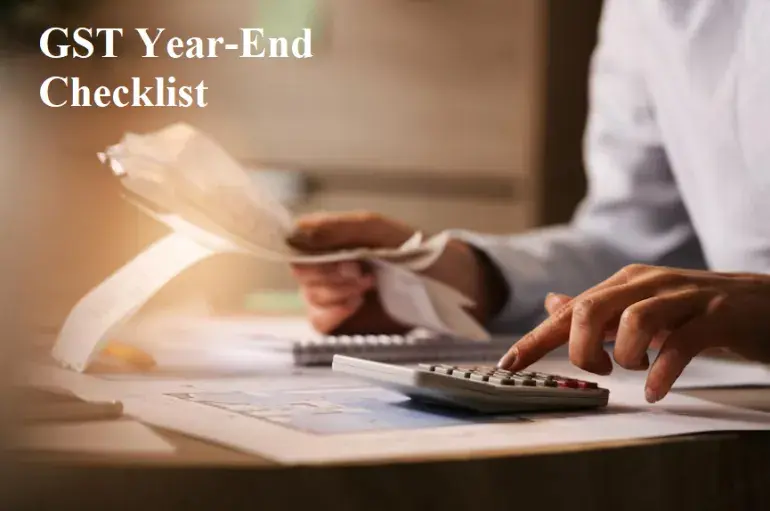GST Year-End Checklist
The GST Year-End Checklist is the most important document for a GST taxpayer, as with the financial year end it becomes essential to have these documents and parameters in place for a smooth GST return filing!
6 Digit HSN Mandatory for E-invoicing -
It is mandatory for the taxpayers to mention 6-digit HSN Codes for their outward supplies having annual aggregate turnover (AATO) more than Rs 5 Crores.
In the upcoming weeks, there will be a significant modification to the e-invoice system under Goods and Services Tax (GST). The CBIC officially announced that 4 digit HSN (Harmonic Nomenclature System HSN) will no longer be accepted; only 6-digit HSN Codes will be accepted on the e-invoice gateway. If you are looking for help to migrate from 4 digit to 6 digit HSN codes, click here to connect with our support team.
Ref.: As per the GST Notification No.78/2020 – Central Tax dated 15th October, 2020.
LUT – Exports / Supply to SEZ -
Any registered person availing the option to supply goods or services for export without payment of IGST needs to furnish a bond or a Letter of Undertaking (LUT) in Form GST RFD-11. In simple terms, all registered taxpayers who export goods will have to furnish LUT in GST RFD-11 form in order to export without the payment of IGST. It is crucial to note that LUT application is required to be completed before March 31, 2023, or before supply for Exports and SEZ. Note: The previous LUT is valid up to March 31, 2023, only.
Ref.: In terms of rule 96A of CGST Rule-2017 notified by GST Notification No. 16/2017 dated 07-07-2017.
Opt-in or out of GST Schemes-
A) Composition Scheme under GST: If you wish to opt for the Composition Scheme for the financial year 2023-24, the last date to opt-in or opt-out from the Composition Scheme is 31st March 2023. Form CMP-02 must be used to opt into the composition scheme (both supplier of goods and service provider).
B) QRMP Scheme under GST:- Registered persons having aggregate turnover up to Rs 5 Cr. are allowed to furnish their GST returns on a quarterly basis along with monthly payment of tax under Quarterly Return Monthly Payment or QRMP scheme under GST, with effect from January 01, 2021, i.e. from the last quarter of FY 2020-21. Taxpayers must note that the last date to opt-in or opt-out from the QRMP Scheme is 30th April 2023 for the financial year 2023-24.
GST Refund -
A streamlined GST process allows taxpayers to get a GST refund when they pay more tax than they owe in certain circumstances. If taxpayers want to receive their GST refund on time, they must apply for it by correctly completing out the necessary papers. The refund will be credited to their respective bank accounts in accordance with the GST refund procedure. Note: 31st March 2023 is the last date to apply for a GST refund.
Refund can be applied in the following case
- ITC Refund for Inverted Duty Structure
- ITC in case of Export under LUT
- Deemed Export Supplies
- Supplies to SEZ units and developers
- Finalization of Provisional Assessment
- Refund of Pre-Deposit
- Excess payment due to mistake
- Refund of CGST & SGST paid by treating the supply as Intra-State
- Supply which is subsequently held as Inter-State supply
Start fresh invoice number series -
With the start of the new financial year, GST taxpayers should start a new invoice series, unique for the financial year, in respect of the issue of Bill of Supply by registered taxpayers availing Composition Scheme or supplying exempted goods or services or both.
If the provisions of Rule 46 or Rule 49 are not adhered to, apart from being a compliance issue, taxpayers may face problems while generating E-Way Bill on the E-way bill system or furnishing their Form GSTR 1 or applying for a GST refund.
Ref.: As per the GST advisory released in 2019. A similar provision is there in Rule 49 of the CGST Rules 2017. Many softwares like Ginesys ERP and other accounting software handle this automatically.
Pending ITC -
It is important to avail all your pending input tax credit for the year. It’s the financial year-end and it is time for you to complete the GST reconciliation of GSTR 2B with all your Purchase Invoices. This indeed is a significant step to collect all your pending ITC. Reconcile Credit Availed during the year available in 2B; Both Missing credit (vendor follow up) and Additional credits(Expenses Accounting).
GSTR 3B/GSTR 1 entry Vs Accounting entries and Sales in Financial Statements VS E-Way Bills -
There are five places where our sales are captured; one is GSTR-1, the second is GSTR-3B, the third is accounting entries, the fourth is Financial Statements, and the fifth is E-Way bills. It is important that the details of all five places should be the same. Variance in the value at any place may lead to the payment of interest or penalty or negative marking in GST audits. Basis GSTR 3B post journal from Input and output ledgers to Electronic Credit and Liability ledger. Offset the liability ledger along with cash payment.
Amendments /Rectification -
It is recommended to amend and rectify any mistakes or omissions made in GSTR-1 or GSTR 3B returns for the previous financial year in the March 2023 returns. For the same, the taxpayer should reconcile their books of accounts (Ledgers) with the uploaded returns. And adjust the differences (if any) in form GSTR 3B. Also for any mistakes made in GSTR-1, for instance, uploading the wrong GSTIN, submitting B2C invoices instead of B2B invoices, omitted invoices, etc. that should be amended, can be amended now.






